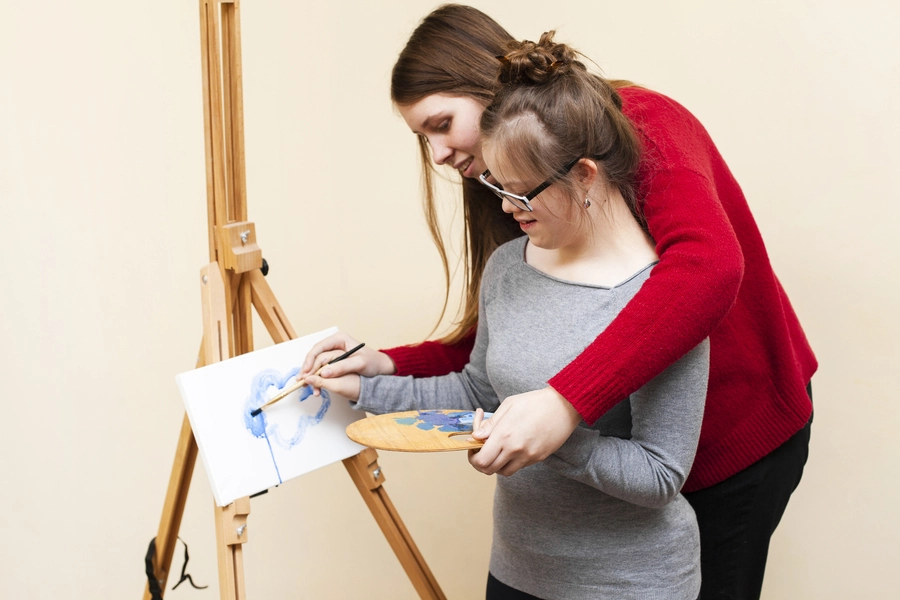Welcome to YAY Today’s blog where we delve into the empowering world of art and its unique role in expressing and educating about disabilities. Art, in its diverse and numerous forms, serves as a profound medium for communication, transcending the barriers often faced by individuals with disabilities.
The power of art in the context of disabilities lies in its ability to convey emotions, experiences, and perspectives that words sometimes fail to capture. For those living with disabilities, art offers a platform for self-expression, enabling them to share their stories and challenges in a society that often overlooks their voices. By engaging in artistic activities, whether it be painting, music, dance, or digital art, individuals with disabilities can explore and express their identities in ways that are liberating and therapeutic.
In Australia, the conversation around disabilities has been evolving, with a growing recognition of the need for inclusivity and understanding. Art plays a crucial role in this evolution. Through exhibitions, workshops, and community projects, art brings people together, fostering a sense of empathy and connection. It challenges viewers to see the world through a different lens, one that respects and celebrates diversity.
Moreover, art has a unique ability to educate and raise awareness about the realities of living with a disability. It can break down stereotypes and misconceptions, replacing them with authentic representations that highlight the strength and resilience of the disabled community. This is particularly important in a society where misinformation and stigma can still be prevalent.
For those interested in exploring this intersection of art and disability further, there are numerous resources and organizations dedicated to this cause. Engaging with these groups not only broadens one’s understanding but also supports the artists and advocates working tirelessly in this field.
As we progress, it’s essential to continue supporting initiatives that integrate art and disability. This support can take many forms, from attending exhibitions and sharing artists’ work online to participating in community projects and advocating for inclusive policies. Every action contributes to building a more empathetic and inclusive society.
To keep this conversation going and to discover more about how art is shaping our understanding of disabilities, we invite you to explore other articles on YAY Today. Your engagement helps elevate these vital discussions and supports our mission of inclusivity and understanding.
In conclusion, art serves as a powerful tool in expressing and educating about disabilities. It offers a unique lens through which we can understand and appreciate the diverse experiences of individuals with disabilities. By embracing and promoting this intersection of art and disability, we can foster a more inclusive and empathetic society.
→ Stay engaged with YAY Today for more insights and discussions on this significant topic. Let’s continue to learn, share, and grow together in our understanding and appreciation of the rich tapestry of human experiences.
FAQ: Frequently Asked Questions
- Are there specific art programs in Australia for people with disabilities? Yes, there are several programs and initiatives across Australia designed specifically for people with disabilities. These range from community-based workshops to more formalized art therapy programs. Organizations like Arts Access Australia and the National Disability Insurance Scheme (NDIS) provide resources and support for such programs. Additionally, many local community centers and art schools offer inclusive art classes tailored to individuals with varying abilities. These programs not only focus on art making but also aim to build community and foster social connections.
Check out our blog here and enjoy!

